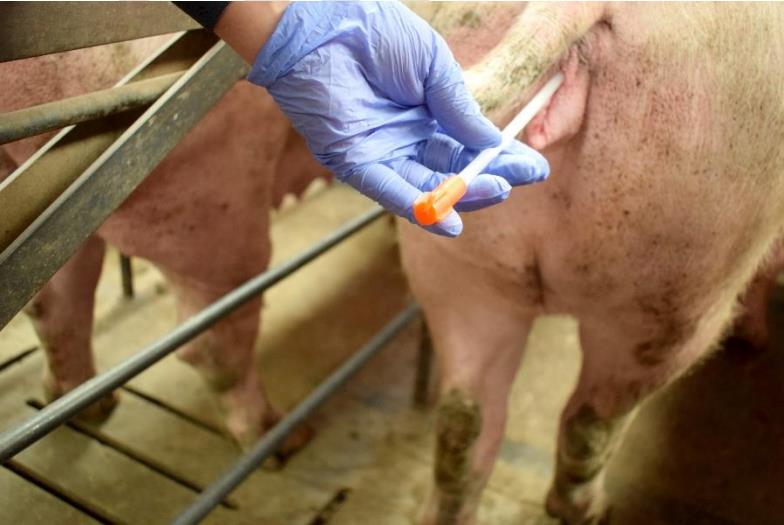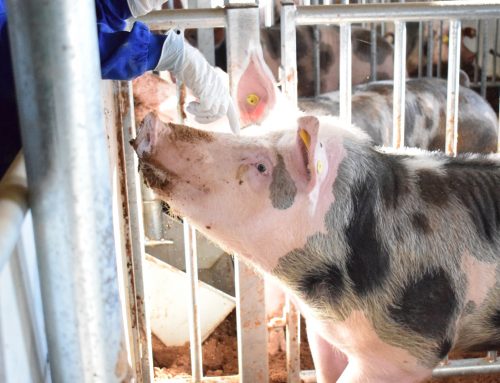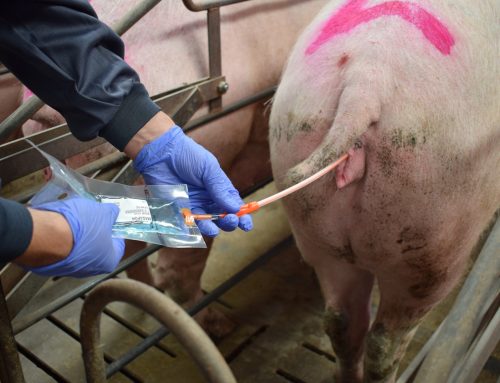Last week we posted a set of tips for traditional insemination, in this article you can find the second part.
Two ways of insemination can be used with traditional insemination:
- Conventional: the operator grabs the dose and the catheter till the sow has finished absorbing it. It requires more time but it offers more control. Each operator could be with two sows at a time.
- Auto-insemination: By using “Breeding buddy” to hold the doses avoiding the operator grabbing them. Furthermore, it gives stimulation to the sow. With this system several sows may be inseminated at a time. Each operator could mate 5-10 sows at the same time.
If the “auto-insemination” technique is used, it must be accompanied with a continuous surveillance. Despite it gives a huge advantage in insemination time, the lack of attention can penalize the reproductive results (check the backflow, avoid the sow lies down or the catheter/dose goes out of its place, etc.). That is why it is advisable to inseminate manually the problematic and the nervous sows to properly introduce the semen.
Once the sow has absorbed the entire dose, the catheter could be inside the animal for a couple of minutes with the adapter cap on to act as a physic barrier (it avoids the expulsion of the genital tract liquid) and keeps stimulating the upward uterine contractions.

When the process is finished, remove the catheters carefully. Sometimes, (especially in nulliparous sows) it may happen that the catheter keeps strongly tighten to the sow cervix and it cannot be removed easily. It is important to keep calm because if a pull is given the animal can be hurt. To remove it, pull with constant force turning it clockwise (in case of “Spiral” catheters).
Once the process is finished, the boar can be left few minutes before taking him back to his place in order to get a bigger stimulation in sows.
Last but not least, it is advisable to “standardize” the “procedures and operations” which will be taken in the farm through a SOP document so all workers will follow the same guidelines.
Insemination is a team work. If it becomes long and tiring, it can happen that staff get tired with less patient and overlook some important details that can lessen the reproductive results (backflows, animals that lie down, catheters which go out).
Furthermore, the staff must have received a proper and reliable training. It is essential to have more than one person capable to make these kind of tasks in order not to reduce the performance in vacation or in case of sick leaves, shifts, etc….


